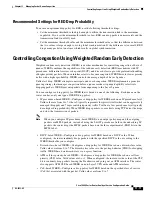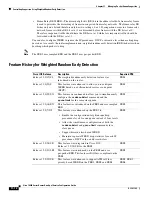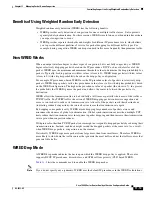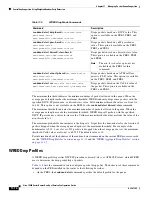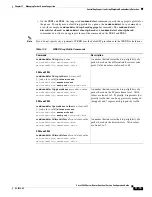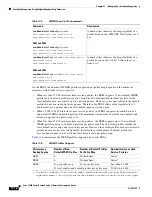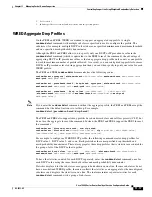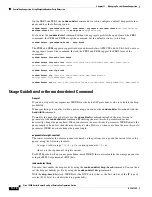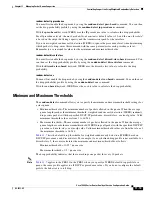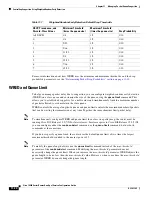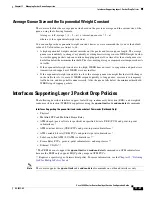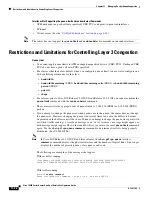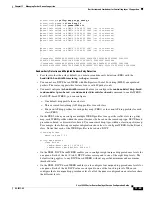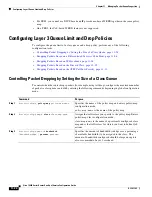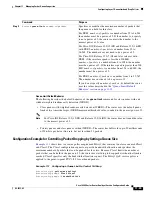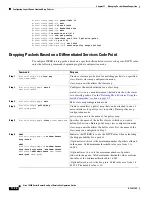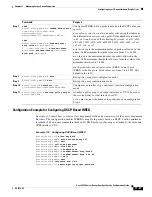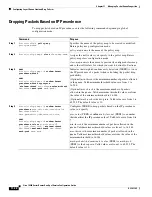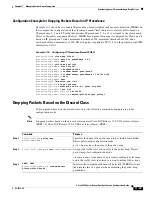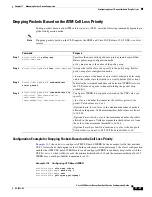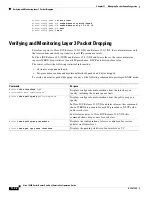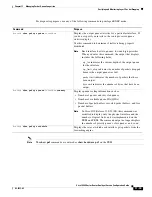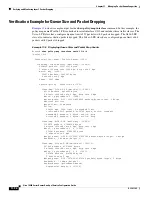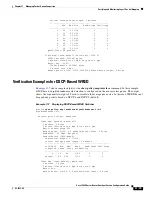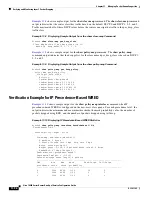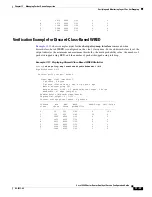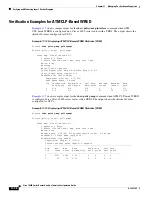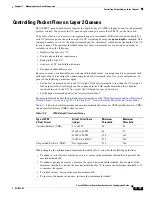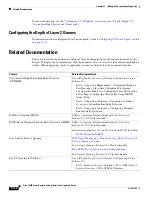
11-25
Cisco 10000 Series Router Quality of Service Configuration Guide
OL-7433-09
Chapter 11 Managing Packet Queue Congestion
Configuring Layer 3 Queue Limit and Drop Policies
Queue-Limit Default Behavior
The following describes the default behavior of the
queue-limit
command for class queues with and
without weighted random early detection (WRED):
•
Class queues with weighted random early detection (WRED)—The router uses the default queue
limit of two times the largest WRED maximum threshold value, rounded to the nearest power of 2.
Note
For Cisco IOS Release 12.2(15)BX and Release 12.2(16)BX, the router does not round the value
to the nearest power of 2.
•
Priority queues and class queues without WRED—The router has buffers for up to 50 milliseconds
of 256-byte packets at line rate, but not less than 32 packets.
Configuration Example for Controlling Packet Dropping by Setting a Queue Size
Example 11-1
shows how to create a policy map named Policy1
that
contains two classes named Class1
and Class2. The Class1 configuration requests a specific bandwidth allocation and specifies the
maximum number of packets that can be queued for the class. Because Class1 limits the number of
packets that can be held in the queue to 32, the router uses tail drop to drop packets when that limit is
reached. Class2 specifies only the bandwidth allocation request. The Policy1 QoS service policy is
applied to the point-to-point PVC 1/32 for outbound packets.
Example 11-1
Configuring a Queue Limit to Control Tail Drop
Router(config)#
policy-map Policy1
Router(config-pmap)#
class Class1
Router(config-pmap-c)#
bandwidth 3000
Step 4
Router#
queue-limit
number-of-packets
Specifies or modifies the maximum number of packets that
the queue can hold for this class.
For PRE1,
number-of-packets
is a number from 32 to 16,384;
the number must be a power of 2. If the number you specify
is not a power of 2, the router converts the number to the
nearest power of 2 value.
For Cisco IOS Release 12.2(15)BX and Release 12.2(16)BX
with PRE2,
number-of-packets
is a number from 32 to
16,384. The number does not need to be a power of 2.
For Cisco IOS Release 12.3(7)XI and later releases with
PRE2, if the interface speed is less than 500 MB,
number-of-packets
is a number from 8 to 4096; the number
must be a power of 2. If the interface speed is greater than 500
MB,
number-of-packets
is a number from 128 to 64,000; the
number must be a power of 2.
For PRE3,
number-of-packets
is a number from 1 to 32,767.
The number does not need to be a power of 2.
If you do not specify
number-of-packets
, by default the router
uses the values described in the
“Queue-Limit Default
Behavior” section on page 11-25
.
Command
Purpose

